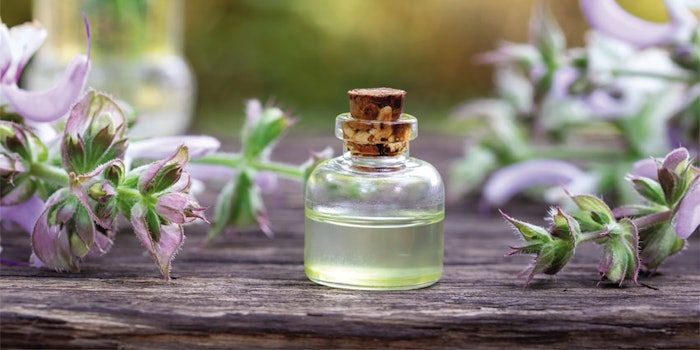
Executive Summary
Considerable literature data are available on the composition of essential oils. However, much of this relates to small scale experimental trials. For regulation purposes such as REACH (Registration, Evaluation, Authorisation and Restriction of Chemicals), and now UK REACH, detailed information on the composition of commercially traded essential oils is required. This paper is part of a series of publications providing compositional data where this information is lacking. GLC (gas liquid chromatography) fingerprint chromatograms of seven authentic, commercially available essential oils were obtained in a collaborative study using the recommended procedure given in Part XVII1 of this series and are presented here (this paper represents Part XXIV). The samples examined were oils of chamomile English (also known as chamomile Roman), bergamot FCF (furocoumarin-free), clary sage, spike lavender, neroli and two oils of petitgrain, bigarade and Paraguay. These were selected in consultation with the UK essential oil trade through the BEOA (British Essential Oil Association). The results obtained show a fingerprint gas chromatogram and a corresponding table of the composition for each oil and will enable the correct regulatory assessments to be made.
This paper is set to run in a three-part series in consecutive issues exploring six other esters including bergamot, clary sage, spike lavender, neroli, petitgrain bigarade and petitgrain Paraguay. You can find Part 1 here.
Bergamot
The small, fruiting citrus tree Citrus bergamia Risso, synonym Citrus aurantium subsp. bergamia [Risso & Poit.] Wight & Arn. ex Engl. is of the Rutaceae family and mainly cultivated in the Calabria coastal region of southern Italy, with some production also in Brazil and the Ivory Coast. Like many commercial citrus trees, they are usually grafted onto the hardier, more frost-resistant bitter orange root stock. The fruits produced in the winter season are the size of oranges, the shape of lemons and picked while the fruit is still a dark green color.
This mobile oil is extracted from the peel of the whole fruit using pelatrice extractors, is dark green in color and has a fresh, sweet, fruity, floral odor. This zest rasping method keeps the peel oil separated from the acidic juice with which it might react. Unlike other citrus oils, bergamot oil has a high level of linalol and linalyl acetate, as well as the ubiquitous dextro-limonene that is found in citrus peel oils.6
References
- Analytical Methods Committee (1997). Application of Gas–Liquid Chromatography to the Analysis of Essential Oils Part XVII. Fingerprinting of Essential Oils by Temperature-programmed Gas–Liquid Chromatography Using Capillary Columns with Non-polar Stationary Phases. The Analyst, 122(10), 1167-1174.
6. International Fragrance Association website (2019) www.ifraorg.org
Download the complete PDF here.
For the full article, please check out the Perfumer & Flavorist+ September 2021 issue.










